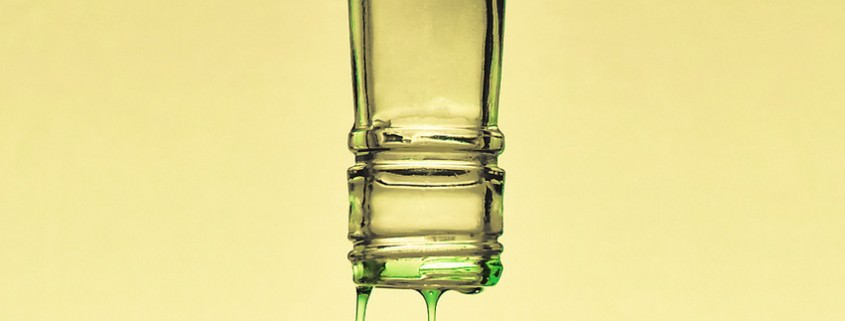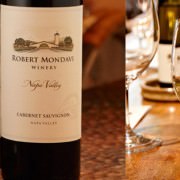Bootleg Liquor and the Future of Mobile Advertising
Earlier this year, international wine and spirit suppliers began efforts to combat the large and profitable counterfeit alcohol market. Utilizing new technology, they’re attempting to change how consumers interact with products in stores. Suppliers are looking beyond security measures, though. The fraud detection technology also opens up new marketing channels. It’s an interesting two-fold effort that looks to combine two distinct areas: consumer fraud protection and marketing. Industry leaders Diageo and Pernod Ricard have focused on the future of mobile marketing. But will the efforts pay off by reducing bootleg liquor sales and changing how marketers advertise to consumers?
Bootleg Alcohol Still a Big Business
In the U.S., liquor bootlegging brings to mind prohibition and gangsters like Al Capone. Bootleggers seem to exist only in the past and in Hollywood movies. But the counterfeit alcohol market is alive and well, and can have deadly consequences for those actually consuming the knock-off bottles. If you research stories on the counterfeit trade, you’ll find tales that run the scale from thrilling stories of rogue wine flippers scamming America’s elite oenophiles, to downright scary stories of bootleg alcohol killing dozens of villagers in Kenya. The illicit liquor trade is becoming a problem in the U.K., as well. The counterfeit market continues to grow despite increased efforts to curb it, and unsurprisingly so, because theres a lot of money to be made selling unregulated liquor.
The new fraud protection products are being promoted as a service for consumers who want to make sure that the bottle of Johnnie Walker Blue they are purchasing is actually Johnnie Blue. But the main aim for spirits behemoths’ like Diageo, Pernod-Ricard, and Remy Cointreau is an increased ability to protect and promote their brands while eliminating those who seek to profit off imitation.
The first anti-fraud effort was put forth by Diageo. From the Drink’s Business article “Diageo Embraces Internet of Everything”:
“Working in conjunction with electronic printing specialists Thin Film Electronics, Diageo has applied the technology to create a prototype for its Johnnie Walker Blue Label, which will be unveiled at the Mobile World Congress in Barcelona next month.
The bottle uses Thin Film’s trademarked OpenSense system in printer sensor tags, which deploys the Near Field Communication capability found in smartphones to track a product’s movement across the supply chain, in-store and to the point of consumption.”
Essentially, Thin Film would inform a buyer if the bottle had already been opened by tracking the bottles journey through the supply chain. This aims to cut down the counterfeiting practice of replacing a bottle’s content with cheaper liquor, or procuring empty bottles of rare spirits and wine and re-selling the refilled bottles for bloated prices.
New Marketing Tools
Thin Film Electronics and their theory of the “internet of everything” seeks to imbue inanimate objects with a form of intelligence. The capability of Thin Film goes beyond just sensors. With the ability to interact with smart phones and mobile devices through wireless communication, it looks to be a new way for marketers to reach their consumer base.
From Helen Michels, global innovation director on the Futures Team at Diageo, : “Mobile technology is changing the way we live, and as a consumer brands company we want to embrace its power to deliver amazing new consumer experiences in the future.
The most recent product launched is Pernod Ricard’s Puma technology. The project utilizes QR codes as tracking points for bottles. QR codes may have generally failed as a marketing tool, but Pernod Ricard hopes the codes can help stomp at bootleggers.
One of Diageo’s claims for the benefit of Thin Film is that it can’t be replicated, unlike QR codes. Thin Film may be a better tool for security measures, but will it fare better than QR codes did with marketing?
How the Wireless Marketing Works
Marketers have a lot of faith in beacon advertisements. These advertisements are transmitted to customer’s smart phones through blue tooth signals sent out from a local beacon in the store the customer is shopping in. In this case, those beacons would be the Thin Film technology on the bottles.
While beacon advertising has grown, consumer reception has been tepid. Which means is effectiveness is limited. There are many contingencies for beacon advertising to work. Customers must have blue tooth turned on on their phones, and also have an app installed that can receive the beacon signal and turn that signal into a notification on a shopper’s phone. It’s a much more involved form of in-store advertising than product placement or signage. The customer must be an active participant in order to receive the ads or coupons and discounts sent out by the beacons.
Where Can the Duel Function of Security and Marketing be Successful
Marketers are forecasting large scale growth for beacon advertising over the next few years. Beacon advertising is most prominent in countries with developed mobile networks and high ownership of mobile phones like the U.S., but marketers see huge potential in countries now developing large scale mobile networks, like India, Brazil, and China.
These developing countries are also hotbeds of counterfeit alcohol markets. These countries are where Diageo’s Thin Film and Pernod Ricard’s Puma technology will see increased implementation. They seem to be prime regions for beacon advertising built in to fraud protection technology.
But as beacon advertising becomes more common, and companies look to engage consumers with wireless ads, you should expect to see more mobile advertising in a liquor store near you.
- 5 Fall Cocktails to Capture the Flavors of Autumn - September 26, 2018
- How Restaurants Can Ignore Sales and Increase Profits - May 9, 2018
- 2018 Spring Wine Trends - April 18, 2018









